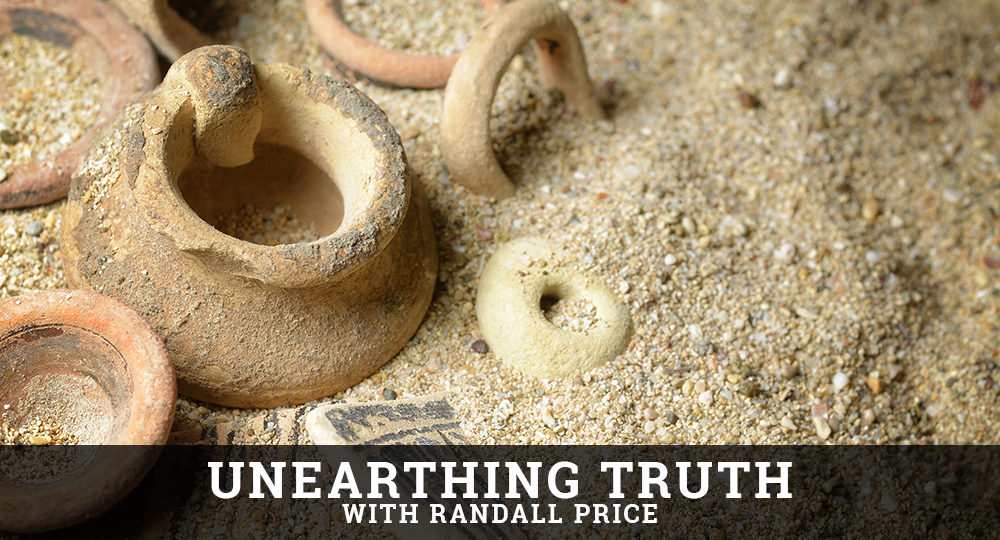Archaeology and Jericho (Part 2)
One of the best-known accounts from Scripture is the miracle of the walls that came tumbling down when “Joshua fit the battle of Jericho,” as the old song goes. Therefore, the archaeological excavations conducted at Jericho should provide evidence of such a biblically significant event.
However, the latest excavations conducted since 1950 concluded that Jericho was destroyed 150 years before Scripture places the Israelites at the site.1 Archaeologists claim the biblical authors made up the story and attributed Jericho’s fall to Israel.
In our last issue we refuted the belief that Israel could not have invaded and conquered Canaan. In this column we will address the claim that the biblical account of the fall of Jericho is a myth—which it is not.
The Timing. Every excavation at Jericho has produced archaeological evidence of the city walls’ destruction and the city being burned, just as the Bible described (Josh. 6:5, 24). The issue is not if this happened but when it happened and who did it.
Earlier archaeologists concluded that the timing of what happened could be determined by literal biblical chronology (Jud. 11:26; 1 Ki. 6:1), which gave a date of 1406 BC (Late Bronze Age). Later archaeologists believed the archaeological evidence alone should determine the date.
Since the walls could be dated to an earlier time (Middle Bronze Age) and no pottery (used to date a site) from the Late Bronze Age was found, archaeologists determined that Jericho was destroyed in the Middle Bronze period and was uninhabited at the time of Joshua. However, there was no Late Bronze wall because the Middle Bronze III wall was still strong and serving its purpose in the Late Bronze period.
Although most of the Late Bronze remains were eroded or removed by human activity, there was evidence of Late Bronze habitation.2 Scarabs and seals containing the names of Egyptian royalty were buried with people in Jericho’s cemetery, clearly indicating the city was active in Joshua’s day.3 One excavator discovered a Late Bronze clay tablet with an administrative text, evidence that the city at that time had a functioning government and an archive to house such official correspondence.4
In addition, earlier excavations discovered a “red ware,” a local imitation of more expensive imported pottery from Cyprus. This type of pottery, which came into use only in the Late Bronze age, was ignored by an excavator who, misidentifying some of her pottery finds, had examples of the very pottery she had used as evidence against the biblical dating.
Furthermore, several more findings of the excavations help confirm the biblical account of Israel’s conquest.5 The discovery of large quantities of storage jars filled with grain indicate the destruction occurred during the harvest season (Josh. 2:6; 3:15). Storage jars still filled with grain were found, confirming a short siege (6:15, 20). And the most recent excavations exposed the mudbrick walls that sat atop the stone revetment (retaining) walls, verifying they were leveled completely (v. 20).
This evidence, along with the documentary evidence in Scripture, assures us God’s Word is true and Joshua did indeed fit the battle of Jericho.
ENDNOTES
-
-
-
- Kathleen Kenyon, Digging Up Jericho (London: Ernest Benn, 1957), 262.
- Amihai Mazar, Archaeology of the Land of the Bible, Vol. 1: 10,000–586 BC, Anchor Bible Reference Library (New York, NY: Doubleday, 1990), 331.
- Bryant Wood, “Did the Israelites Conquer Jericho? A New Look at the Archaeological Evidence,” Biblical Archaeology Review 16:2 (1990): 44–58.
- Lorenzo Nigro, “TELL ES-SULTAN 2015 A Pilot Project for Archaeology in Palestine,” Near Eastern Archaeology 79:1 (2016), 16.
- Randall Price with H. Wayne House, Zondervan Handbook of Biblical Archaeology (Grand Rapids, MI: Zondervan Academic, 2017), 110.
-
-








